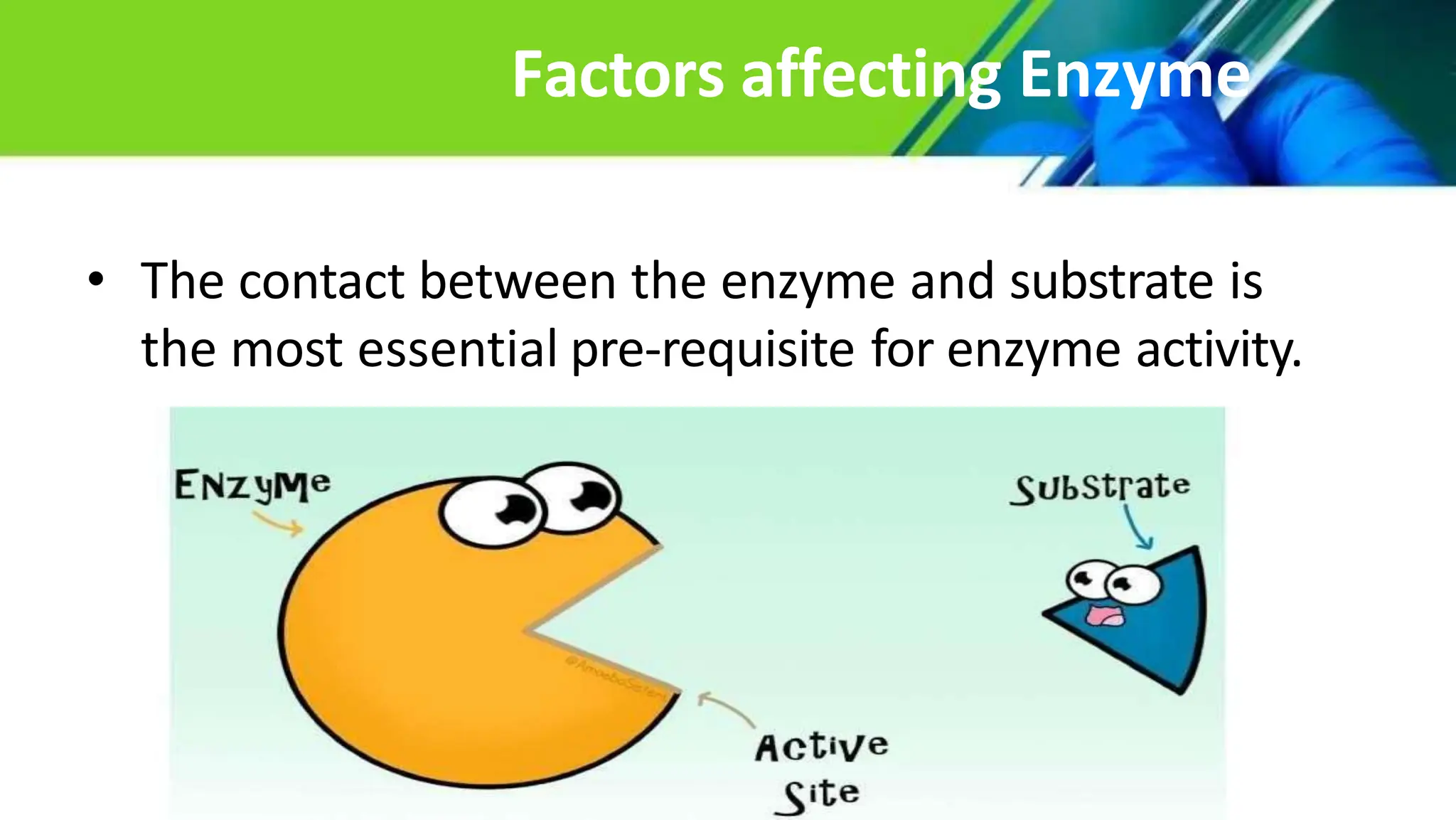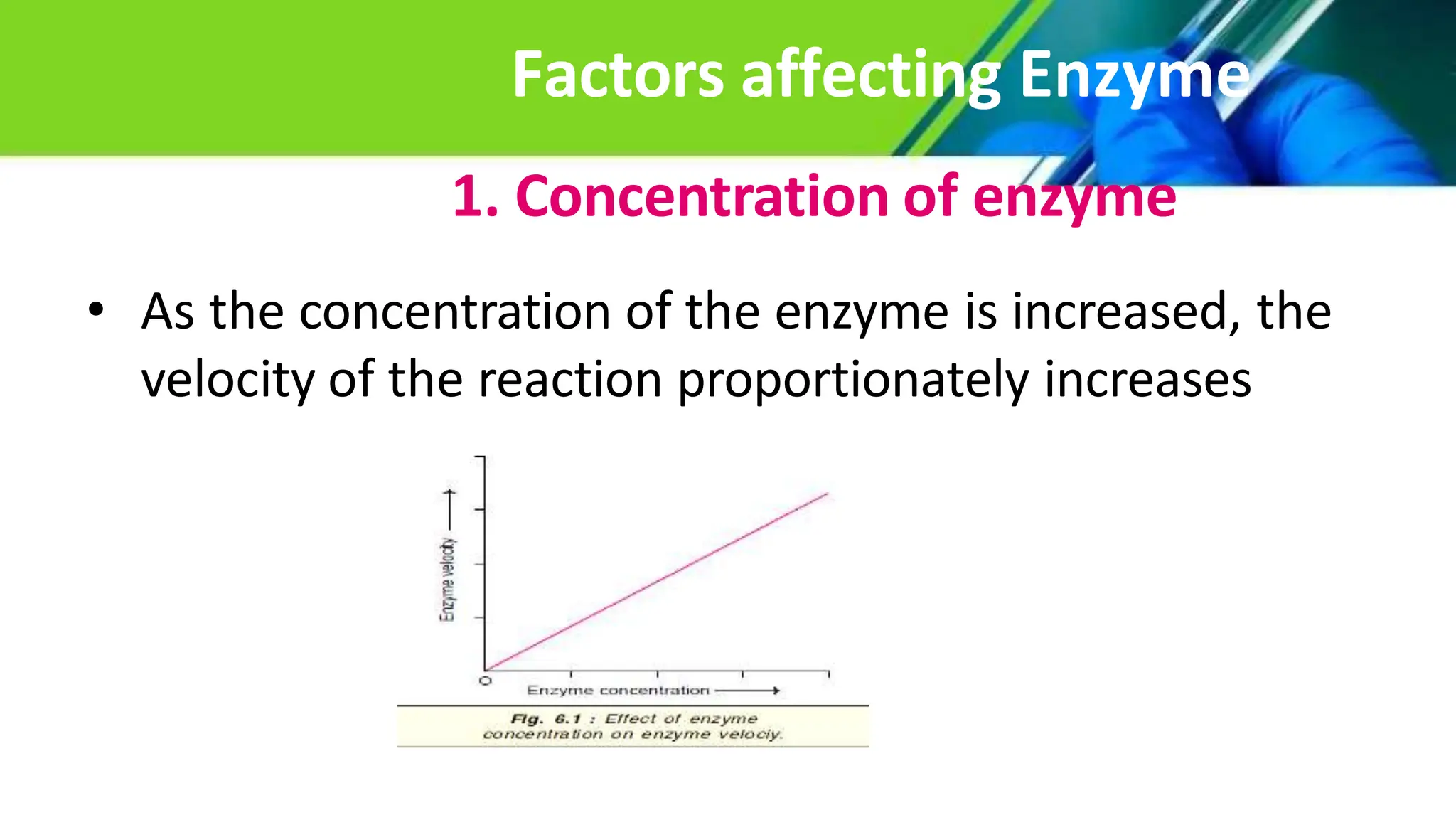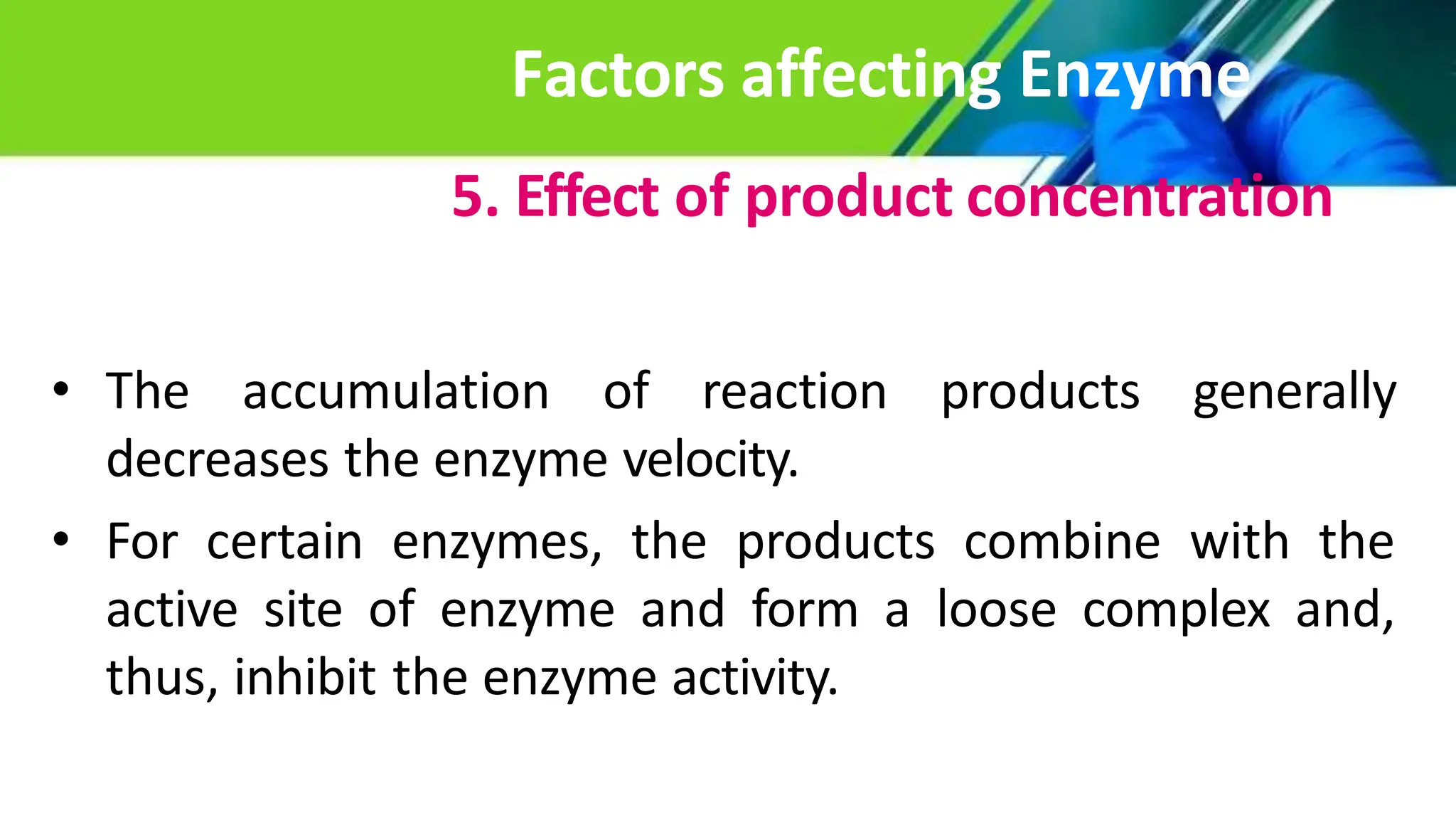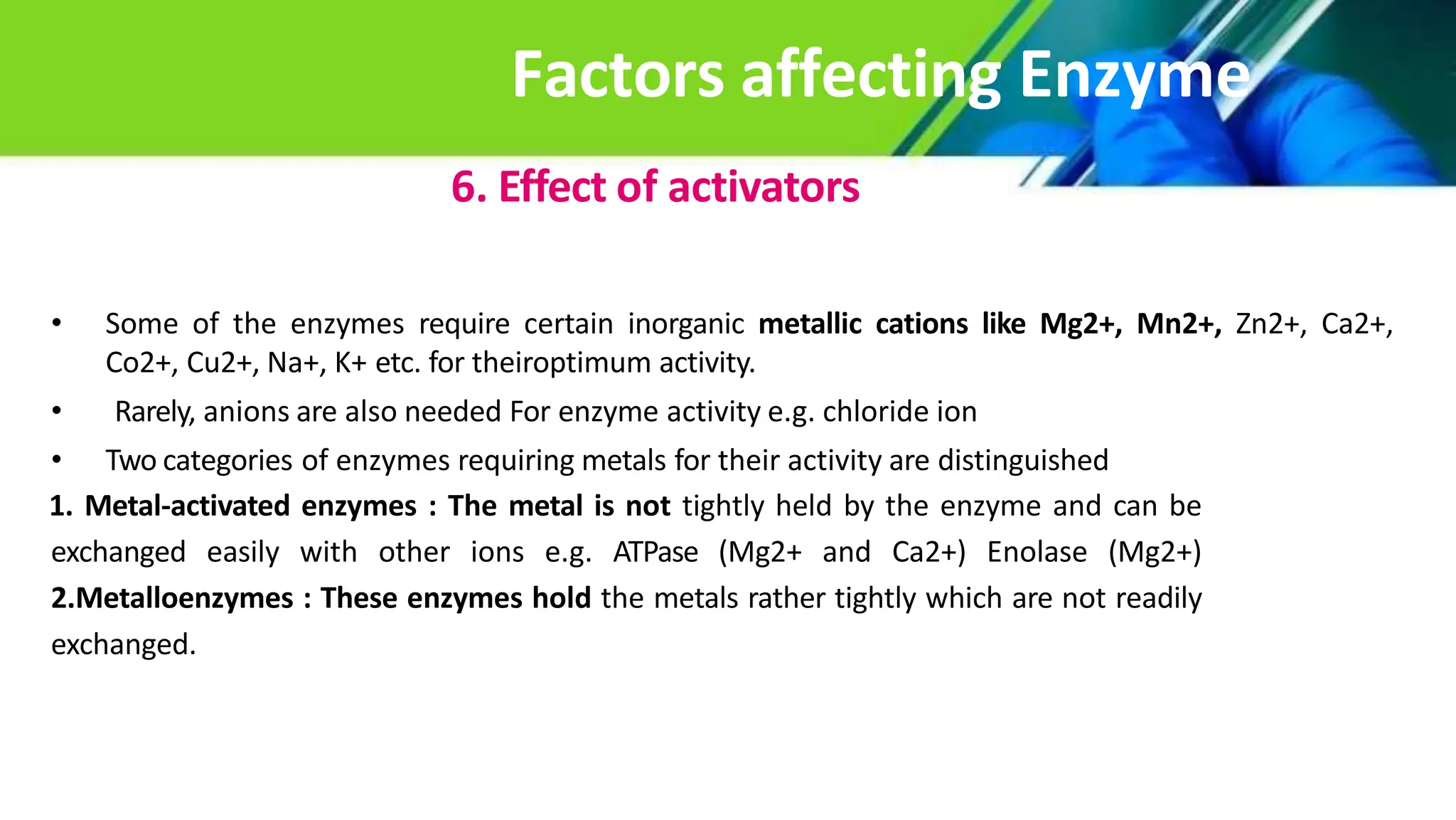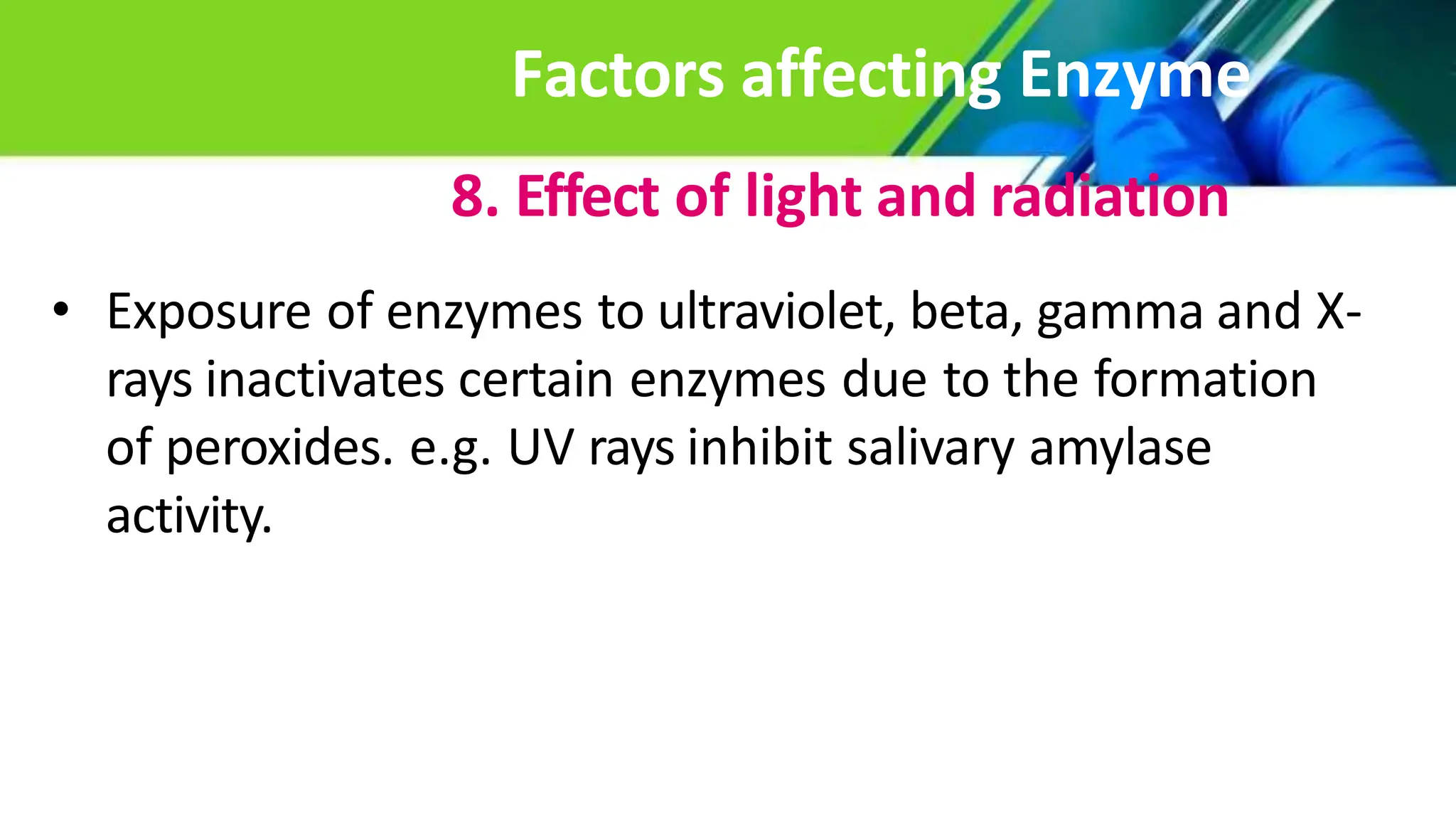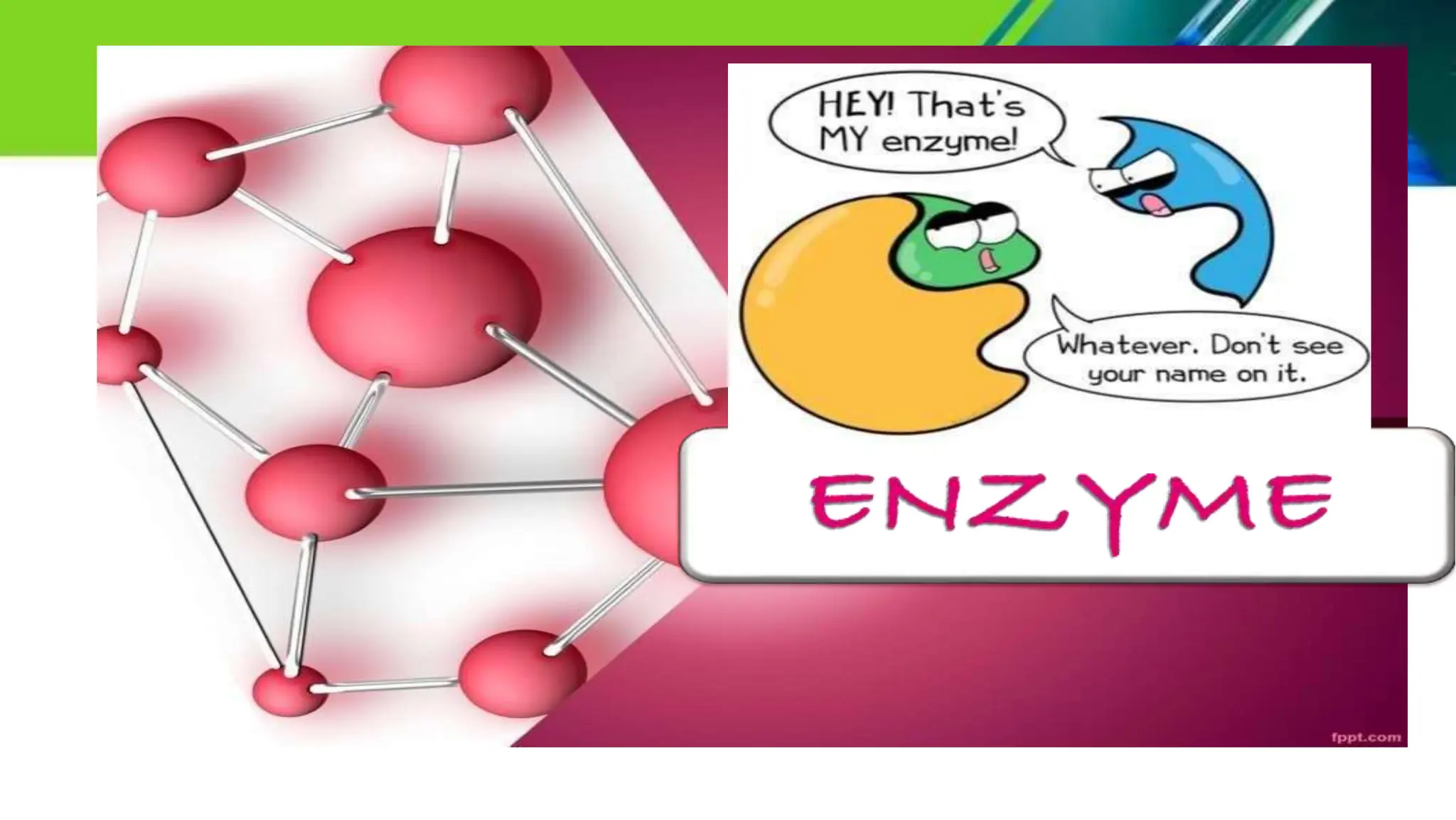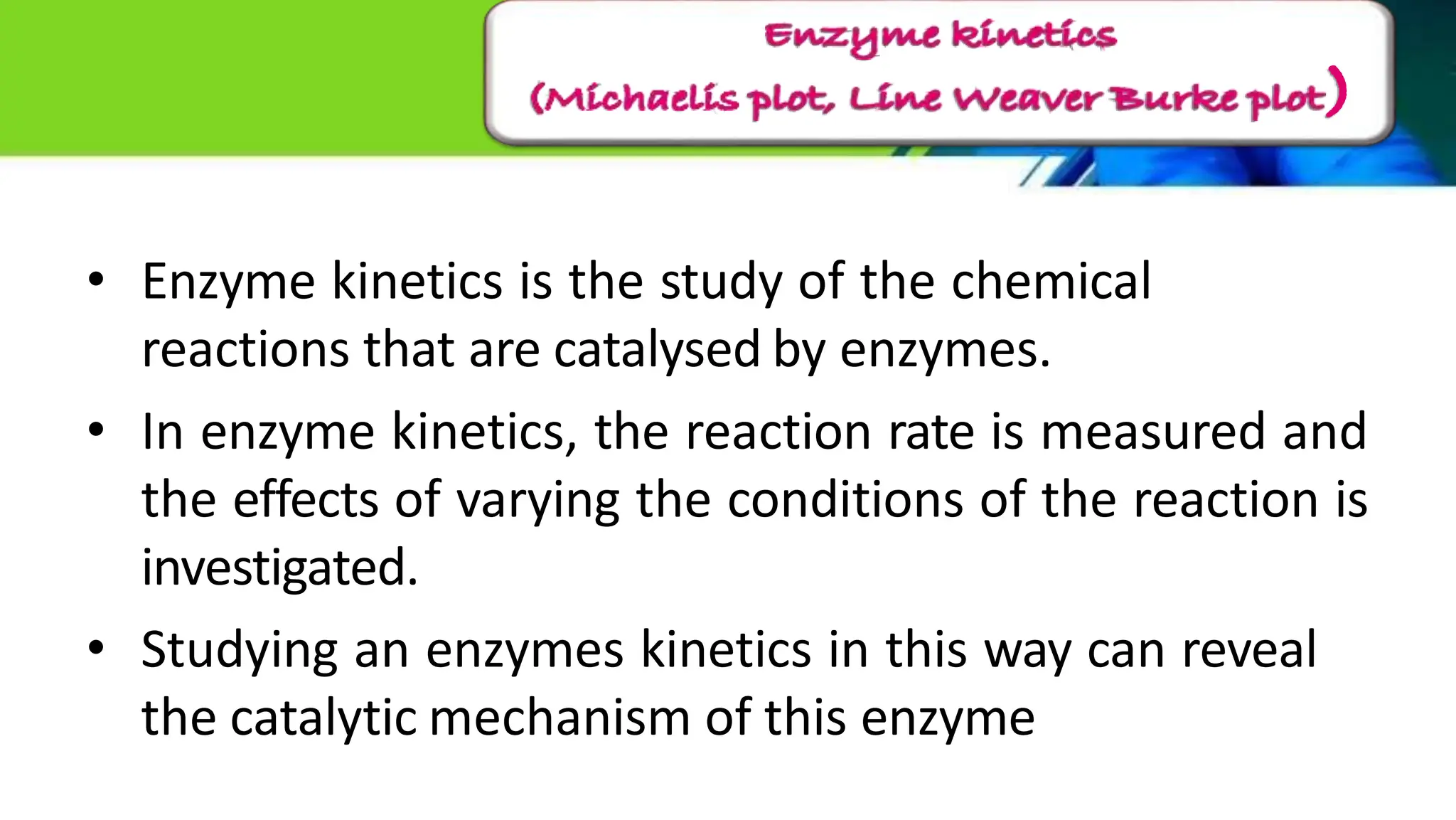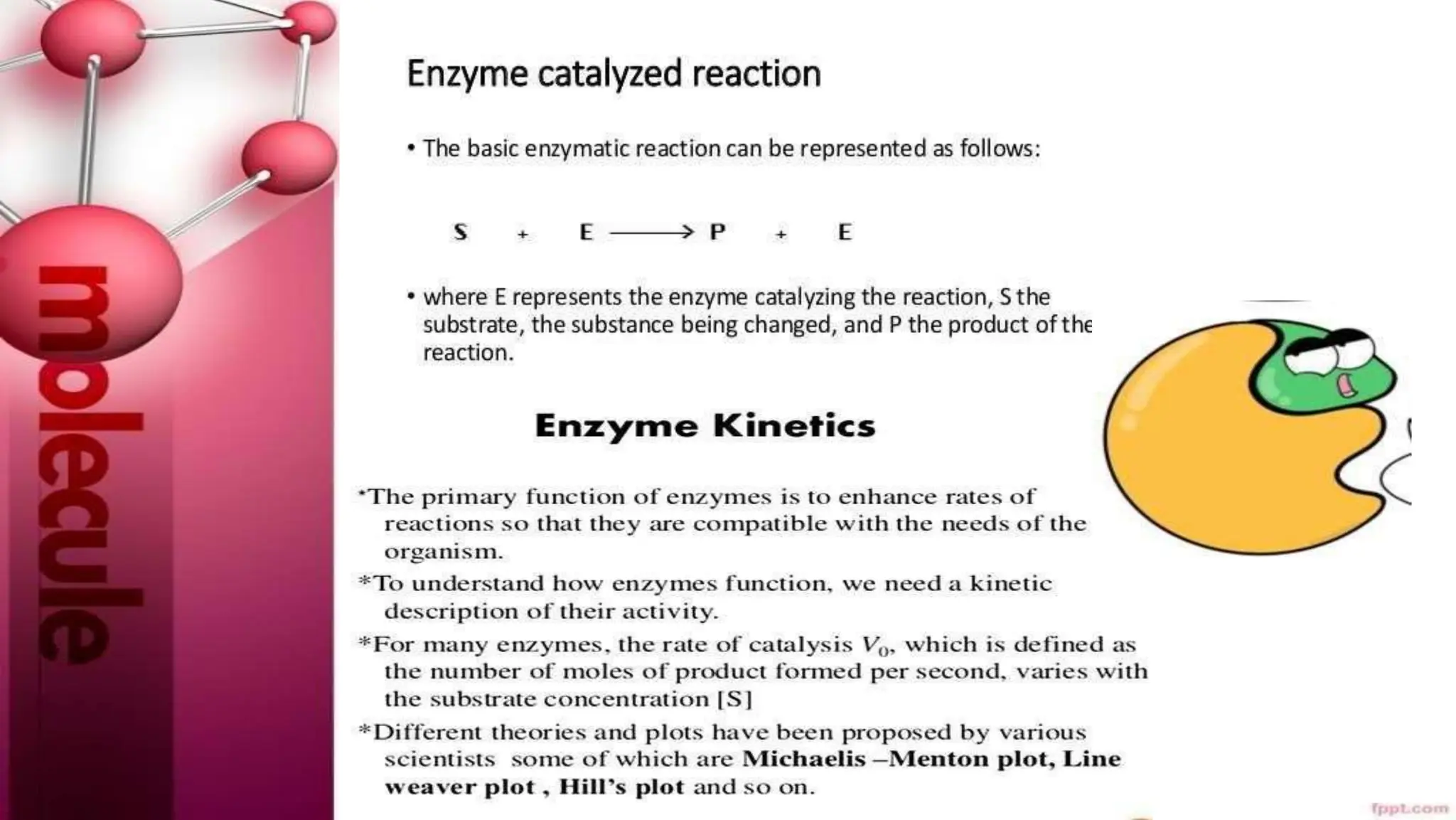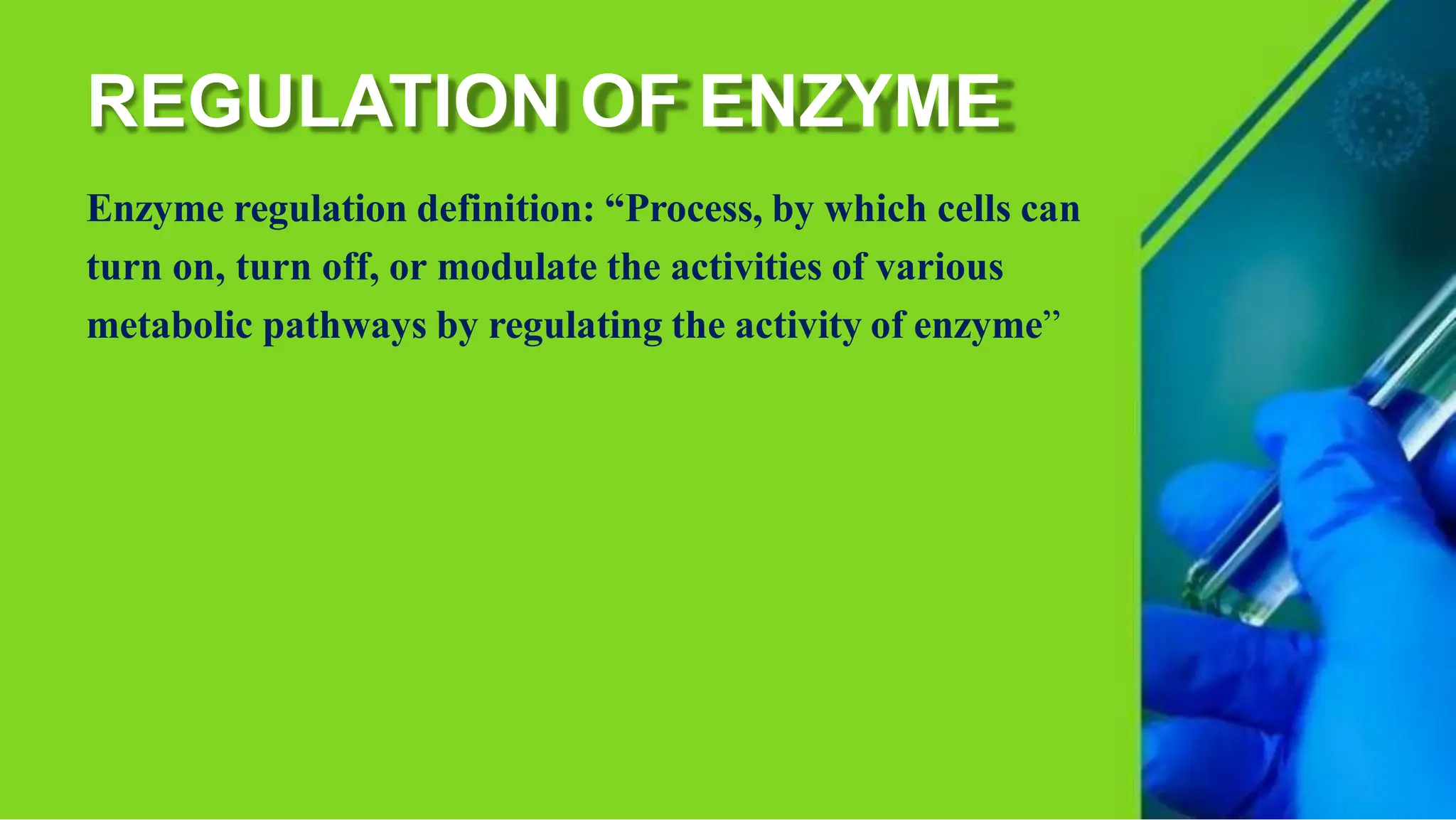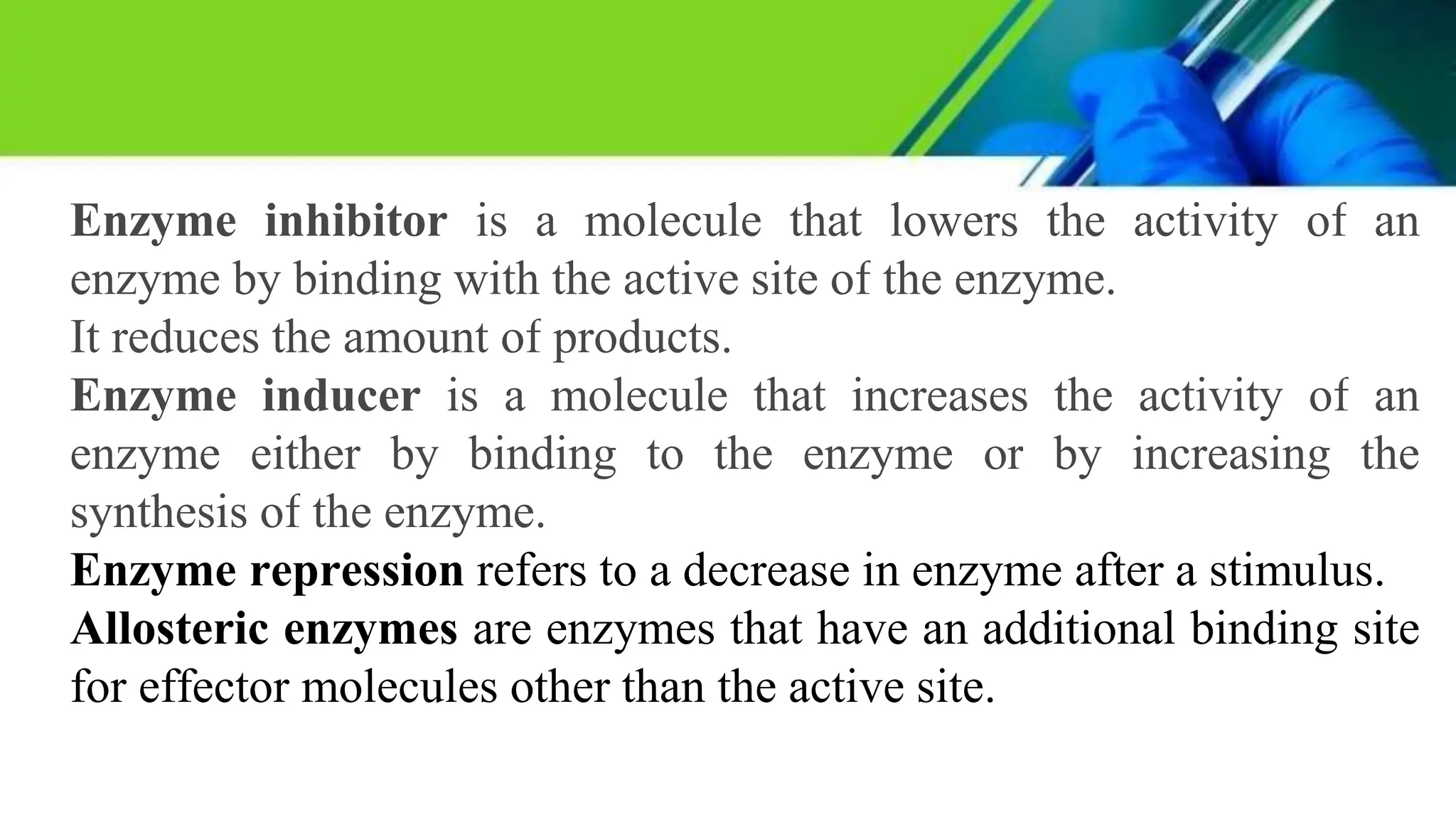The document provides an extensive overview of enzymes, their properties, structure, and classification, emphasizing their role as biocatalysts in biochemical reactions. It discusses factors affecting enzyme activity, types of inhibitors, and the practical applications of enzymes and isoenzymes in diagnostics and therapeutics. Additionally, it highlights the importance of coenzymes, such as ATP, in metabolic processes.



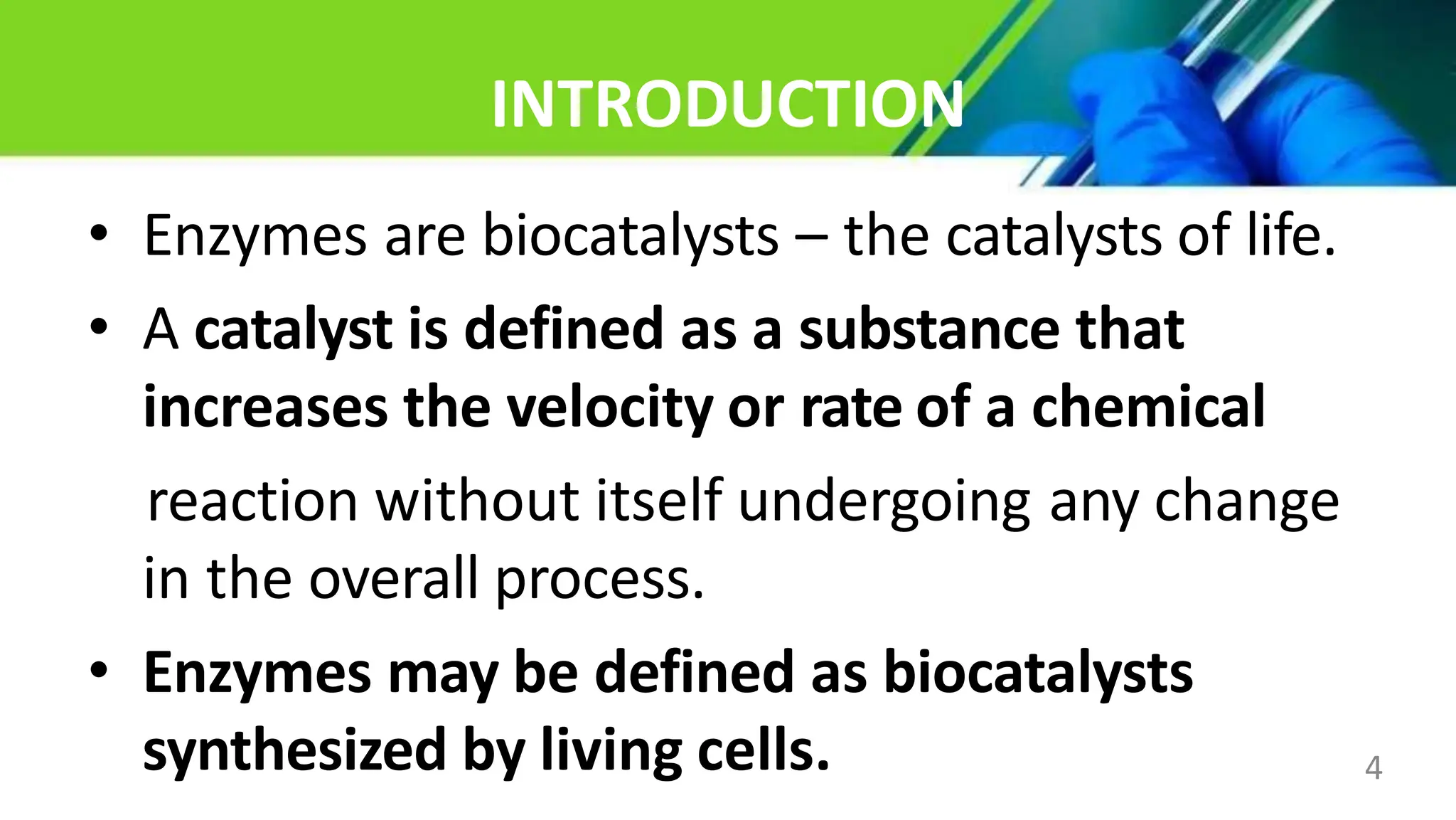













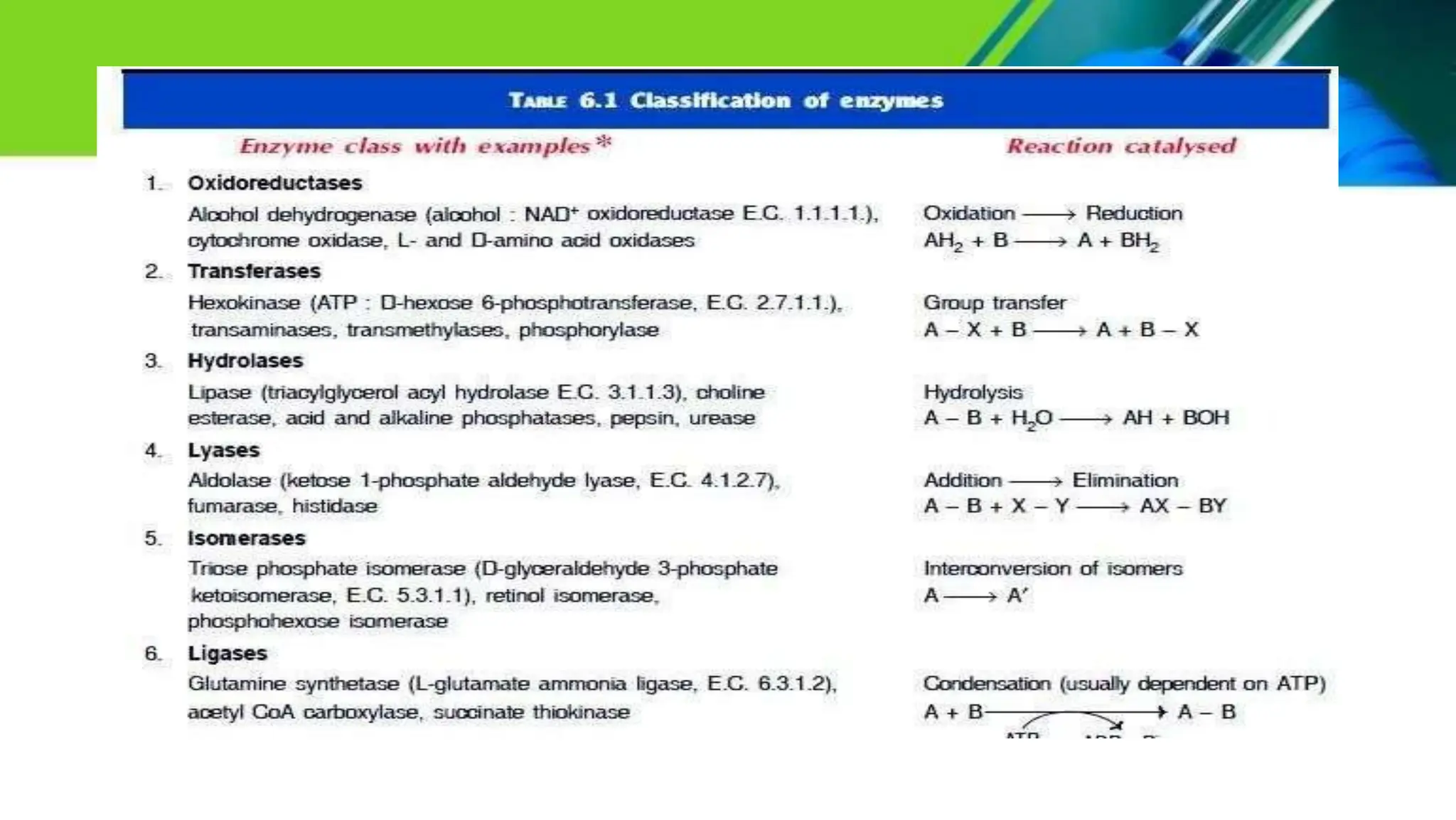
![[The wordOTHLIL (first letter in each class) may be memorised
to remember the six classes of enzymes in the correct order].
• Each class in turn is subdivided into many sub- classes which are further
divided.
• A four digit Enzyme Commission (E.C.) number is
assigned to each enzyme representing the class
(first digit), sub-class (second digit), sub-sub class (third digit) and the individual
enzyme (fourth digit).
• Each enzyme is given a specific name indicating the substrate, coenzyme (if
any) and the type of the reaction catalysed by the enzyme.](https://image.slidesharecdn.com/enzymesunit5-240426022700-400f640b/75/POINT-BIOCHEMISTRY-SEM-2-ENZYMES-UNIT-5-pptx-19-2048.jpg)
